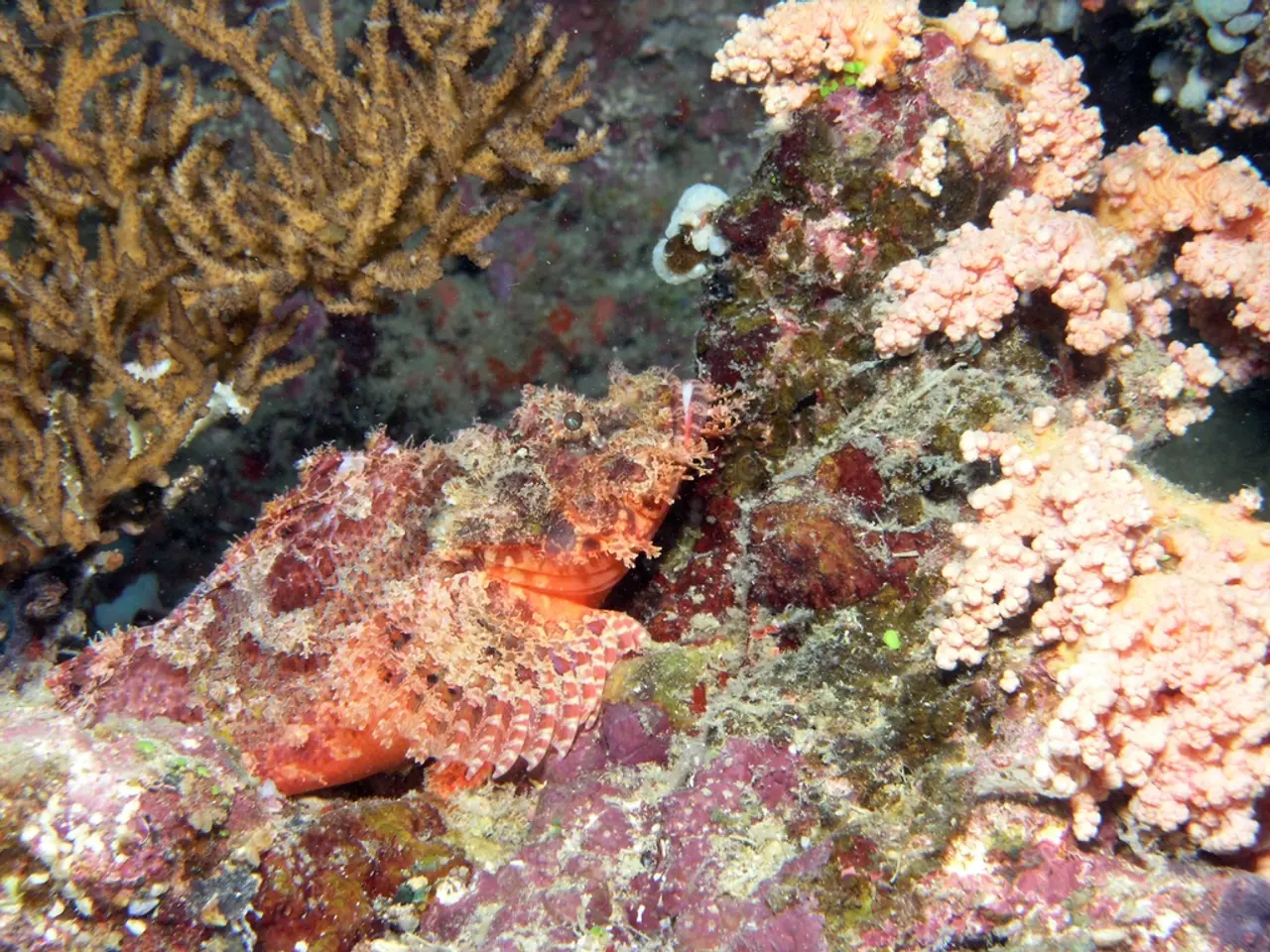Thai dugongs face difficulty due to declining seagrass populations
In the crystal-clear waters of Thailand's coastal provinces, a silent crisis is unfolding. Dugongs, also known as sea cows, are facing a significant threat, with their population dwindling and their habitats disappearing.
Dugongs are classified as vulnerable on The International Union for Conservation of Nature's Red List of Threatened Species. These gentle marine mammals rely on seagrass meadows for sustenance, but these vital ecosystems have been vanishing, particularly in Trang province.
The seagrass die-off has been evident in the Libong Archipelago Wildlife Reserve and the Hat Chao Mai National Park in Trang province, and in Krabi's Ao Nammao Bay, where seagrass coverage plummeted from 60% to a mere 1% in 2024. Phuket, once teeming with seagrass, may now be the only place left where these vital ecosystems still thrive.
The exact reason for the seagrass die-off is not entirely human-caused, but increased coastal development and fishing pressures have undeniably played a role. The massive outbreak of dugong deaths in 2023 and 2024 can primarily be attributed to illegal fishing and habitat destruction.
Piyarat Khumraksa, a marine veterinarian based at the Marine and Coastal Resources Research Centre, discovered a significant increase in dugong deaths in 2023 and 2024, according to Thai government data. The total number of dugong deaths in 2024 was 45, significantly higher than the usual average of 13 per year. Many of these dugongs that washed out of the Andaman Sea were emaciated.
In an effort to address this crisis, the Department of Marine and Coastal Resources (DMCR) drafted a four-part emergency response plan in November 2024 to save Thailand's remaining dugong population. The DMCR began feeding leafy vegetables to dugongs around Phuket as a stopgap until their seagrass can be restored.
However, without a deeper understanding of the causes behind the seagrass die-off, restoration efforts may fall short of providing a viable future for the dugong species. Laddawan Sangsawang, a researcher, warns that previous seagrass restoration efforts have proven challenging.
The DMCR is also studying what aquariums abroad feed captive dugongs and manatees as a potential long-term solution. Seasonal dynamics and local fishing practices are not yet fully understood in seagrass restoration efforts, making the road to recovery a complex one.
The loss of seagrass habitats must be reversed for dugongs to survive in Thailand's waters. It's a race against time to save these gentle marine mammals from extinction.
Read also:
- Understanding Hemorrhagic Gastroenteritis: Key Facts
- Stopping Osteoporosis Treatment: Timeline Considerations
- Tobacco industry's suggested changes on a legislative modification are disregarded by health journalists
- Expanded Community Health Involvement by CK Birla Hospitals, Jaipur, Maintained Through Consistent Outreach Programs Across Rajasthan








